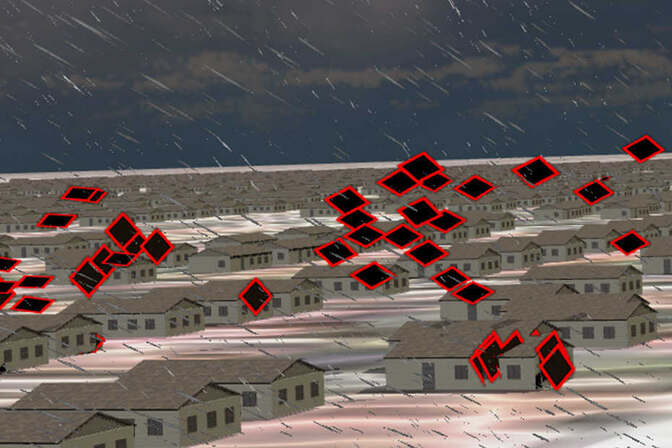
Integrated 3-D visual models to help communities prep for natural disasters
Integrated disaster modeling helps decision-makers discover which improvements will provide the most benefit per dollar spent.

Integrated disaster modeling helps decision-makers discover which improvements will provide the most benefit per dollar spent.
Natural disasters are becoming increasingly costly, with 2016-2018 each recording double the long-term average of billion-dollar disasters.
To address this challenge, the Interdependencies in Community Resilience (ICoR) project aims to combine various disaster models—for instance, wind pressure, building response and human behavior—into comprehensive simulations. It is led by Sherif El-Tawil, a professor of civil and environmental engineering.

Michigan Engineering is on the vanguard of the next infrastructure revolution
This approach integrates models from multiple disciplines, enabling the exploration of complex interactions between different systems before, during and after disasters like hurricanes, which have caused over $300 billion in losses over five years.
The team creates real-time 3D visual simulations to communicate findings effectively, showing dramatic scenarios like flying roof tiles and neighborhood damage. These visualizations help communities understand potential impacts and evaluate mitigation strategies.
The platform’s predictive capabilities allow communities to compare different solutions’ cost-effectiveness—for example, a $1 million solution providing 10% improvement is likely preferred over a $5 million solution improving resilience by 5%, enabling informed decision-making for disaster preparedness.
Vineet R. Kamat and Jason McCormick, professor and associate professor of CEE, respectively, serve as deputy directors of ICoR. Carol Menassa and Seymour Spence, associate and assistant professors of CEE, respectively, serve as co-principal investigators. Read the full story.
Summarized by AI, edited and fact-checked by a human (in 2025).